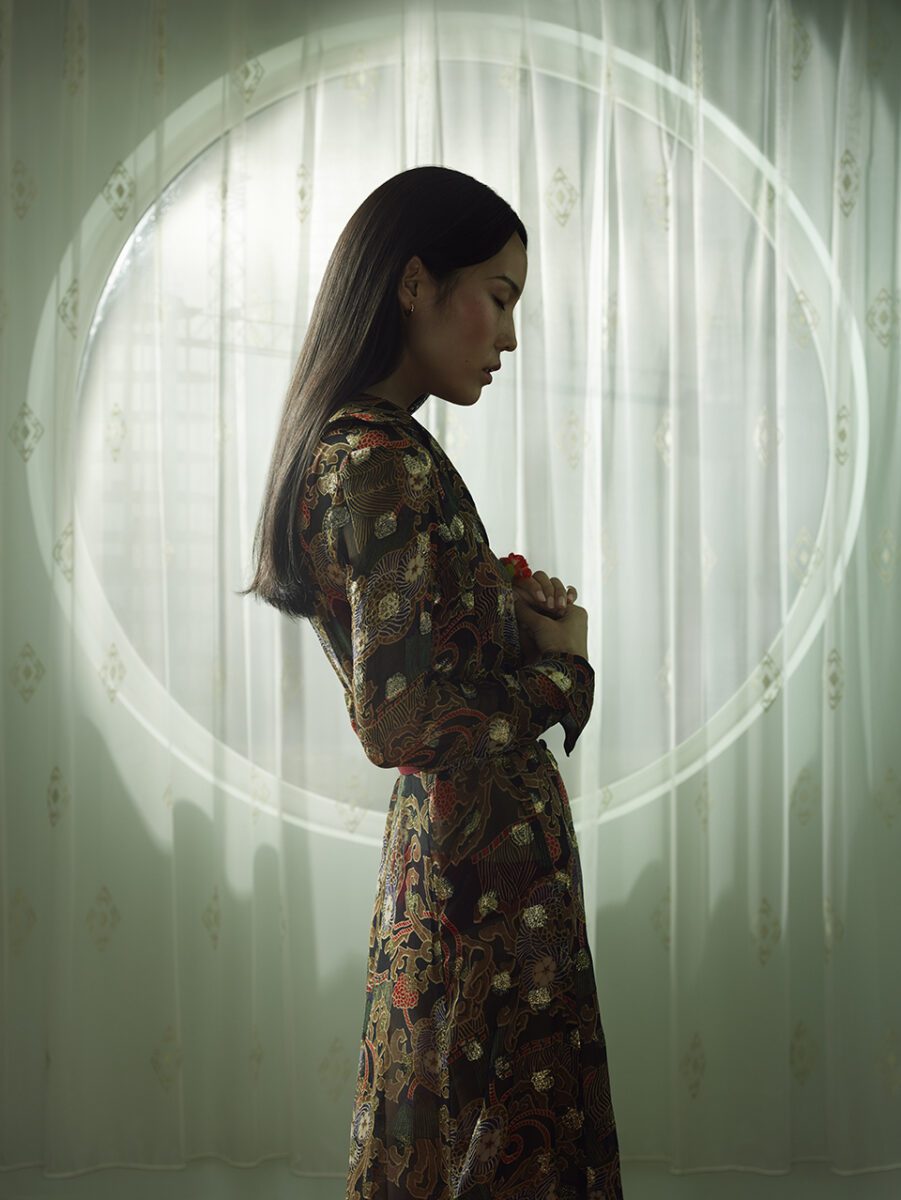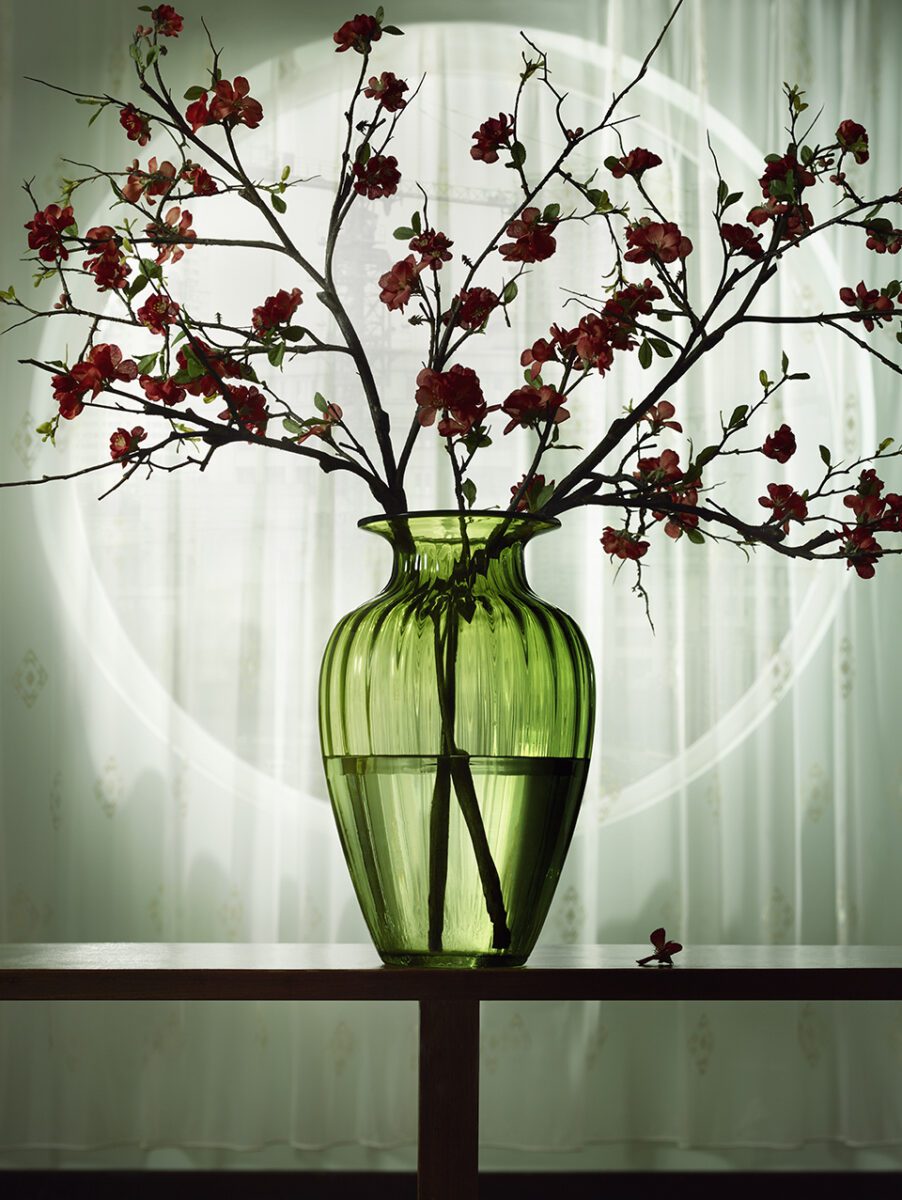Dutch photographer Erwin Olaf (b. 1959) turns 60 this year, with a number of shows marking the occasion, including a major retrospective at Gemeentemuseum Den Haag and an exhibition at Hamiltons Gallery, London. These are accompanied by I Am, a new monograph from Aperture. The book presents the first comprehensive survey of his work, from early images in black-and-white to iconic colour series. Olaf discusses the publication.
A: Your new book is a celebration of your 60th birthday and the first comprehensive survey of your works. How do you feel the book follows your development as a photographer?
EO: It starts when I was 20 years old. It is quite an honest book because it contains not only successful pictures, but also some experiments. It reads like a diary, showing my personal projects. I try to be as true as possible towards myself and my work. In that sense it is me – I Am.
A: How does it document your move between genres – for example fashion and portraiture to fine art?
EO: It’s more a document of my soul and my thinking, but aside from my own projects, I’ve always worked on assignments. For these I am often inspired by personal work – and the other way around. Often, I’m influenced by working in the commercial sphere – as well as in theatre and dance; 85% of my technique comes from experiences learned from advertising photography. I use tools to seduce – to invite the viewer into a dream world. I love to use and misuse those techniques. My language is that of perfection, but I am always trying to look for a crack in that ideal world.

A: How is the book organised to present this timeline?
EO: I worked very closely with Lesley Martin, Publisher, from Aperture. She has the perfect eye for order. I was struggling in the beginning, thinking “I’m still the same person I was when I was 21.” I was mixing images from 2017 with those of 1988. It is now 80% in chronological order – starting at the beginning and working towards 2019. You really see my evolution as a person and as a photographer.
There are explanations in the book via interviews in which Martin asked me about my motivations. I was forced – for the first time in my life – to formulate the ways in which I work. People sometimes say I make shocking photography. I never thought so, but in a world where one million beautiful pictures are uploaded every day, you must have a reason behind what you create. There are extracts explaining what the reader has seen, or what they will see in the next 20 pages. It creates a kind of rhythm throughout the book.
A: What has been your favourite project to date? Is there a favourite series you have?
EO: I think the series I made in 1990 was the first time I started to have my own identity. It’s about black-and-white photography and the art of printing. Similarly, Grief in 2007 was influenced by the photography of the Kennedys in the 1960s, and I am very proud of the emotions it conveys. I was not looking for effect, instead I was going inside and talking more about personal sadness. Recently I finished Palm Springs, which is the first time I’ve photographed landscapes and combined them with an imaginary world. I’m very happy with the result.
A: The book also accompanies shows at many institutions including Gemeentemuseum Den Haag. Could you expand on how the shows are looking at curation and exhibition design to reflect the journey through your career?
EO: The approach is different every time, but at The Hague you can step into the environment. I use sound, film, photography, 3D techniques, statues and moving installations. In this way, you can influence the viewer far more.

A: Could you speak about your new series – Palm Springs? What inspired this series?
EO: It’s the third chapter of the cities I’ve photographed, which include Berlin and Shanghai. Shanghai is about a huge growing power – how the individual is crushed by the group. With a population of 24 million people it is hard to survive on your own. In Berlin, it’s more about democracy.
I was really inspired by Palm Springs. It is such an alien space in the desert, but it reflects a more optimistic period in the history of the US. The images are about hiding yourself in a gated community, whilst the outside world is changing. I wanted to create a fairy-tale, with the nasty reality creeping in – mixing today’s world with nostalgia.
A: How does it differ from previous series you have made?
EO: It is more optimistic. It’s lighter, it’s outdoors. It’s the first time I’ve dared to make some landscape photography. I think it looks more mature. I learned a lot in LA, it’s the capital of film and photography and I met a lot people that taught me about light, point of view and acting.
A: Where do you find inspiration, and how does your creative process work?
EO: I travel through the city and see something from the corner of my eye that has a massive impact on an upcoming series. Walking down the street, observing people, watching a movie, looking a painting or architecture. My influences come from everywhere. There are things that intrigue me in American society that are mixed with my worries about the world and the future. I blend everything.
I start with these ideas. I see the outline of a series and then I start to work on it. I don’t know what the story is; it’s not for me to tell you. I like to provide the visual elements, but I invite the viewer to come into the world and start to create their own dialogue.
I Am is available from Aperture.
Erwin Olaf at Gemeentemuseum Den Haag is open until 12 May.
Erwin Olaf: Women at Hamiltons Gallery, London, runs 14 May – 16 August.
Lead image: Erwin Olaf, Palm Springs, The Worker, 2018. Courtesy Hamiltons Gallery, London





